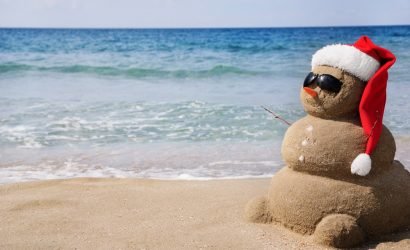100 years ago, more than three-thousand cherry trees arrived in Washington, D.C. from Tokyo, Japan. The trees were given as a gift to the United States in 1912 to celebrate the friendly relationship growing between the two countries. Even though some trees were replaced over the years, thousands of trees covered in cherry blossoms line Tidal Basin in D.C.
From March 20th – April 27th, the National Cherry Blossom Festival will celebrate the coming spring season and the thousands of flowering trees located in our nation’s capital. The festival features events, creative opportunities, contemporary arts, community, culture, and aspects of natural beauty.
That natural beauty can be seen across the Eastern Shore, too. Bright pink, purple, yellow and white trees across the shore are signaling that spring has arrived. Trees could stop traffic with their eye-catching and magnificent spring blooms. Cherry blossom, crab apple, dogwood, magnolia, and pear trees are flowering. Their stunning flowers, blooms, and scents are refreshing signs of spring.
Here are a few flowering trees that bloom during early spring on the Eastern Shore:
 Cherry: Cherry trees provide both flowers and fruit. Ornamental varieties of cherry trees are found most often across the shore. Their blooms produce fragrant pink or white flowers in the spring. Weeping cherry trees have branches covered in snow white floral blooms. Large, thick flowers coat entire trees and sway in soft winds. Flower petals resemble giant snowflakes that cover the ground when carried by the wind. Cherry trees provide a great amount of shade and add immediate value to any landscape. Ornamental cherry trees are one of the most sought-after flowering trees in history.
Cherry: Cherry trees provide both flowers and fruit. Ornamental varieties of cherry trees are found most often across the shore. Their blooms produce fragrant pink or white flowers in the spring. Weeping cherry trees have branches covered in snow white floral blooms. Large, thick flowers coat entire trees and sway in soft winds. Flower petals resemble giant snowflakes that cover the ground when carried by the wind. Cherry trees provide a great amount of shade and add immediate value to any landscape. Ornamental cherry trees are one of the most sought-after flowering trees in history.
Crab apple: Crab apple trees produce blooms so full that they often hide the entire branch of a tree. The blossoms turn to leaves which then transform into fruits. The flowering crab tree boasts displays of deep-pink or red fruits that stem from white or pink flowers.
Dogwood: The dogwood tree is often recognized by its large, bright, curved floral petals. This low-branching tree also produces berries that attract birds and small animals. The actual flower of the dogwood is hidden inside the large, pink, leaf-like petals. The small green buds inside of the pink petals are technically the flowers of the plant. The pink petals will fall off after only a few weeks while the greenish flower remains well into the spring.
Magnolia: Much like the dogwood, the magnolia has ‘biscuit-shaped’ leaves that are shaped like saucers. The pinkish-purple petals surround a white flower. Many believe that the fragrant blooms resemble tulips.
Pear: Pear trees are perfectly cone-shaped and uniform. Because the tree naturally grows in a symmetrical shape covered in large white blossoms, these trees are seen very frequently in modern landscaping. On the Eastern Shore, flowering pear trees often line roads or development entryways. The pear tree does have a sour, pungent smell that is very recognizable. The white blooms of a pear tree offer a long-lasting display into early summer.
Forsythia: Forsythias technically aren’t trees; they are shrubs. Forsythias can be trimmed to look like trees, hedges, or flowering bushes. In early spring, forsythias produce an abundance of golden yellow flowers. They are typically planted in rows and provide unbeatable coverage as a privacy hedge. These plants grow quickly, are extremely easy to maintain, and only shed leaves once a year. They provide great color not only in the spring, but also during autumn.
Check out the gallery below for some photos of flowering trees in the Ocean City, Assateague, and Berlin areas!
If you’d like to visit the centennial-anniversary of the National Cherry Blossom Festival, check out their website. For more information on the history of Japanese cherry blossoms, visit the event's history page.







